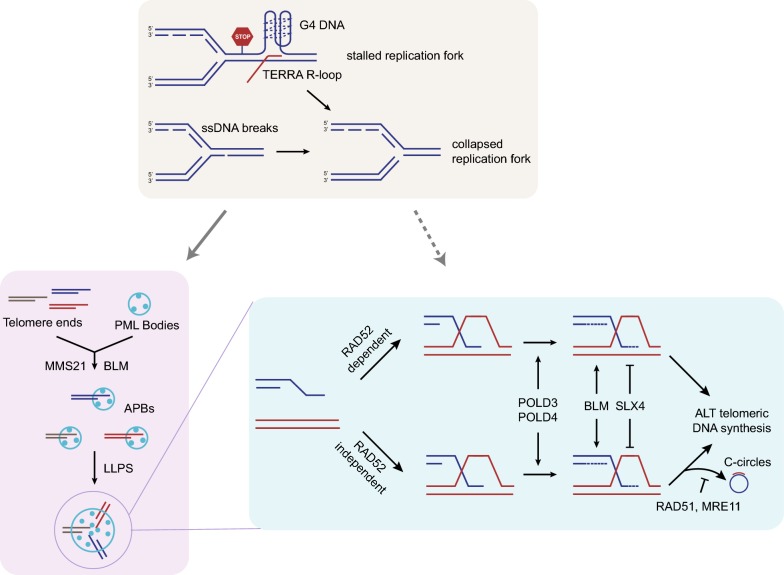Fig. 1.
Framework of the ALT pathways. (Upper section) The replication stress at telomeres may be a trigger for ALT activation. The accumulation of R-loops, G-quadruplexes, and DNA single-strand breaks at telomeres may interfere with DNA replication, leading to collapse of replication forks and formation of one-ended DSBs. (Lower left section) the replication stress or DNA damage at telomeres may induce SUMOylation of telomere proteins, which recruit PML and trigger APB formation through SUMO/SIM-mediated LLPS. The clustering of telomeres and enrichment of DNA repair, recombination, and replication proteins in APBs may drive ALT efficiently. (Lower right section) In APBs, BIR is triggered by the one-ended DSBs at telomeres. ALT can take place through RAD52-dependent and -independent BIR pathways. The conservative DNA replication during BIR is dependent on POLD3/POLD4, promoted by BLM, and inhibited by SLX4. C-circles are generated by the RAD52-independent BIR pathway, which is suppressed by RAD51 and MRE11

